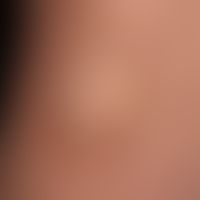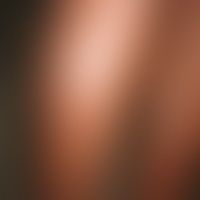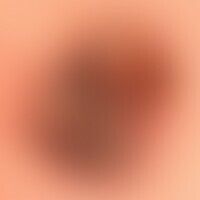Image diagnoses for "yellow"
199 results with 561 images
Results foryellow
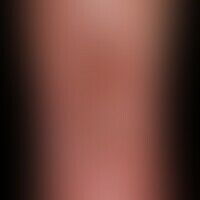
Arterial leg ulcer L98.4
Ulcus cruris arteriosum: arterial leg ulcer that has been present for about 1 year, continuously expanding, sharply defined, extremely painful, known history of smoking with PAVK.

Yellow-nail syndrome L60.5
Yellow-nail syndrome: yellowishdiscolored and evenly thickened toenails (scleronychia).
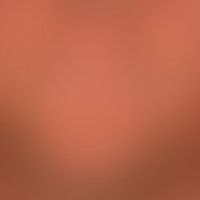
Tyrosine kinase inhibitors
Tyrosine kinase inhibitors: UAW: acne-like, follicular, pustular exanthema

Fibrokeratome acquired digital D23.L
Fibrokeratome, acquired, digital. 7 years old, slightly size progressive, pressure dolent, growing out from under the nail, approx. 0.5 cm diameter, red nodule with horny surface in a 62 year old female patient, which led to a steep lifting of the nail plate. The nail organ is painful with localized pressure.
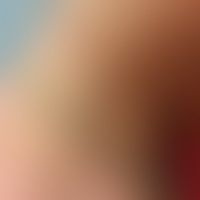
Pseudoxanthoma elasticum Q82.8
Pseudoxanthoma elasticum: Totally asymptomatic, reticular, yellowish papules and plaques on the entire circumference of the neck.

Nail pitting due to psoriasis L60.8
Spotted nails: pronounced pit-shaped nail dystrophies (so-called spotting) with known psoriasis
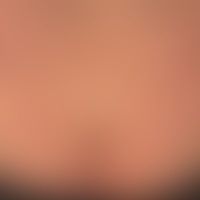
Scleromyxoedema L98.5
Scleromyxoedema. 52-year-old patient. Continuously increasing, moderately itchy skin lesions for 5 years.

Juvenile xanthogranuloma D76.3
Xanthogranuloma, juveniles (sensu strictu): Solitary, softly elastic, yellowish, 1 x 3 cm large knot with a smooth surface on the right cheek of an infant.
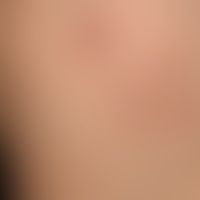
Contagious mollusc B08.1
Molluscum contagiosa: colourful picture with multiple, 0.2-0.3 cm large, yellowish, firm, shiny, sometimes itchy nodules; furthermore small scars and crusty, reddened papules (molluscs in spontaneous healing).

Contagious mollusc B08.1
Molluscum contagiosum: clinical symptoms known for months with mostly aggregated red, shiny papules up to 0.3 cm in size with typical umbilical cord of their surface; known HIV infection.
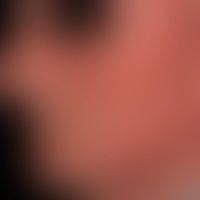
Keratosis actinica keratotic type 57.00
Keratosis actinica, keratotic type: In a 72-year-old outdoor worker, adherent keratotic plaques have increasingly developed in recent years, the mechanical detachment of which is painful, with a tendency to bleed.

Sebaceous hyperplasia senile D23.L
Sebaceous gland hyperplasia: Soft, yellowish papules which have existed for years, slowly increasing in size; in the middle of the picture 2 sebaceous cysts which are the maximum form of a sebaceous gland hyperplasia.
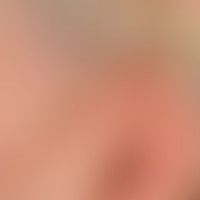
Nevus verrucosus Q82.5
naevus verrucosus. yellow-brown, verrucous plaque already present at birth. increasing verrucous component in recent years. no subjective symptoms.
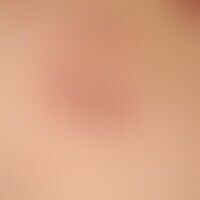
Collagenosis reactive perforating L87.1

Epidermal cyst L72.0
Indolent, deeply dermal, well definable, approx. 1.0 cm large, light yellow, plump elastic node with central porus.
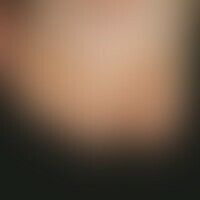
Epidermal nevus (overview) D23.L
Nevus, epidermal. (Detail)Epidermal nevus on the right foot in a 9-month-old boy. First appearance of the skin symptoms at the age of 3 months. The skin lesions are relatively uncharacteristic in terms of ocular diagnosis (flat, blurred, rough, yellowish-brownish plaques).

